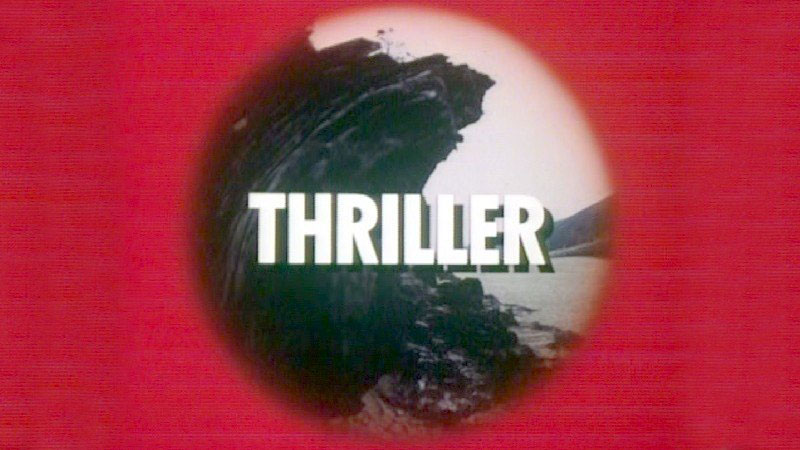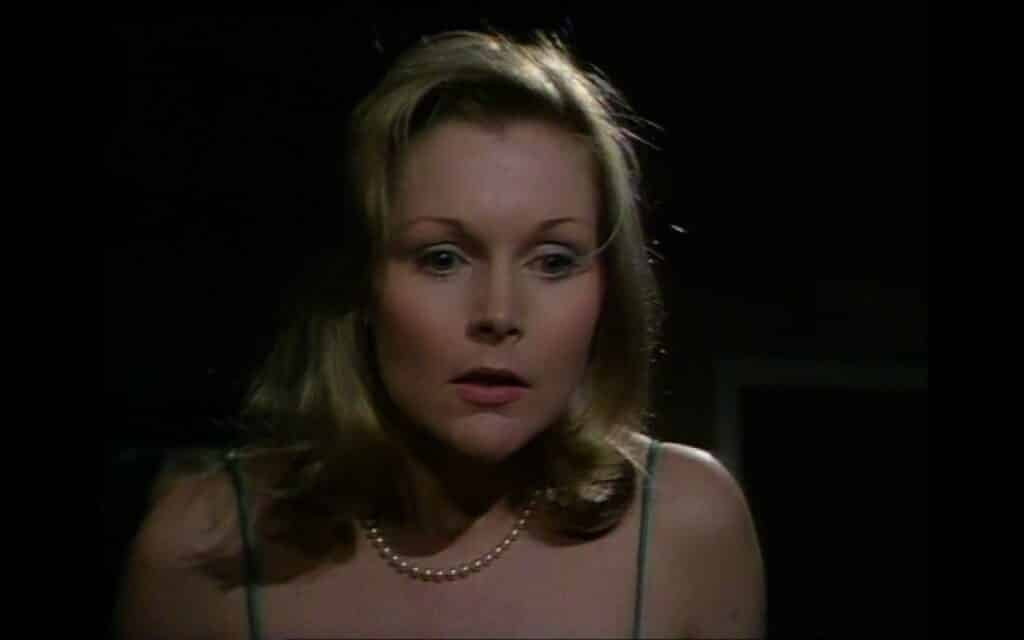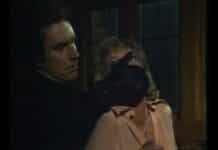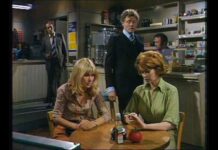A successful model attracts the unwelcome attentions of a nuisance caller. RICHARD PHILLIPS-JONES embarks on series five of Thriller with opening episode, If It’s A Man, Hang Up.

TITLE: Thriller – If It’s A Man, Hang Up
BROADCAST: 12 April 1975
STARRING: Carol Lynley, Tom Conti, Paul Angelis, Gerald Harper, Sue Holderness, John Cater
WRITER: Brian Clemens
DIRECTOR: Shaun O’Riordan
Photographic model Suzy Martin (Lynley) is getting unwelcome attention from a mystery phone caller, and brings in the police to investigate but who is the culprit?
There’s Suzy’s former photographer, Terry Cleeves (Angelis) who may be harbouring a grudge for her moving on to the more prestigious Greg Miles (Harper), or perhaps the slightly creepy Murchison (Cater), the concierge at the block of flats where Suzy lives.
Perhaps it’s Miles’ erstwhile lover Betty (Holderness), who might be jealous of the attention he is focusing on Suzy. Then again, it could be Terry’s visiting Italian friend Bruno (Conti), reportedly in England to study psychology.
Whoever the culprit is, Suzy needs to work out exactly who she can trust, especially when those close to her start being first physically attacked, then murdered…

Even a cursory glance around the internet reveals that If It’s A Man, Hang Up certainly has its fans, but I must confess I was struggling to see what all the fuss was about. Watching the episodes in their original running order, I had a niggling feeling that the series was in danger of chasing its own tail as its fifth series kicked off. Sure, there’s the expected red herrings and a nice bit of wrong-footing the audience at the climax, but in my mind everything doesn’t seem to quite hang together as well as it should and indeed did in the show’s strongest episodes.
And yet… things are not so simple as far as this particular story is concerned, for there exists (tucked away on a bonus disc in the DVD box set) a longer, 75-minute version of the episode (see trivia notes). In this longer form, the episode fares much better, with more room to breathe and better opportunity to shine the spotlight on the actions of the various suspects, making the final reveal more of a surprise.
There are also additional scenes of Suzy’s stalker at large, giving proceedings a very giallo-esque feel which is considerably diluted in the shorter version, and the mystery caller’s voice appears to have had extra processing applied which brings to mind the mystery killer in Black Christmas (1974). Additionally, the musical cues are markedly different and arguably used to greater effect: even the commercial break bumpers seem to be placed in more effective positions.
Comparing the two versions back-to-back and side-by-side, much was lost in shearing around nine minutes. It’s still not quite pinnacle Thriller, but the full-form If It’s A Man, Hang Up is nonetheless a solid entry which gives the fifth series a rollicking kick-off.
TRIVIA NOTES: Although the sleevenotes on the boxset say that the longer version was untransmitted, a look at the April 12-18 1975 issue of TV Times shows that the episode was broadcast in a 90-minute timeslot – my personal guess is that it must have been the longer version that appeared during Thriller’s original UK run, since the Independent Broadcasting Authority would surely never have allowed a 64-minute show to be padded out with so many commercials in those days.
The longer edit of If It’s A Man, Hang Up does not have the traditional Thriller titles or theme music, which begs the question of whether it was being considered for broadcast as a standalone story at some point.
The shorter version on the DVD box-set has been reassembled from mostly PAL format material, but the occasional segment cut in from the US version has noticeably poorer picture quality.
The same story formed the basis of a Brian Clemens’ stage play: Lover was performed during 1973, and the cast featured Thriller alumnus James Smillie (as Bruno) and Max Wall (as Murchison) along with Derren Nesbitt, Roger Lloyd Pack and (as Suzy) Sally Ann Howes.
Paul Angelis was a regular sight on UK TV during this period, playing heavies in shows as diverse as The Sweeney and Man About The House, but many viewers were unaware that he had provided Ringo Starr’s voice (and some additional dialogue for George Harrison) for Yellow Submarine (1968), as well as the film’s opening narration.
John Cater was familiar to Brit-horror fans as Superintendent Waverley in the two Dr. Phibes films with Vincent Price.
There is, of course a third version of this episode: The later US TV-movie version, and the rejigged titles are relatively restrained on this occasion, if unbearably tedious and predictably tacky. The end credit roll, which only ran 30 seconds on the original US broadcast is stretched out to a mind-boggling two and a half minutes.







